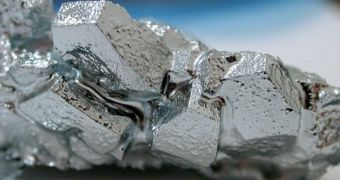One of the greatest mysteries associated with the origin of life is how the right chemicals came to be bound together in a seemingly perfect way and then simply started to live. Amino-acids are at the base of all living creatures, but the conditions that have led to their appearance are still unclear. One researcher believes that the replicating trait of life may have come from crystals, namely from their sparkles.
Patterned structures constantly replicate themselves in the inorganic world, and especially in crystals, University of Glasgow organic chemist Alexander Graham Cairns-Smith says. But it's fairly uncommon in the organic world, as the DNA and RNA molecules are the only ones capable of it.
And that is the real difference between animate and inanimate matter. The thing is that the four protein bases that make up the DNA of every living thing – adenine, cytosine, guanine and thymine – do not repeat themselves in the same order in the nucleic acid strands.
Rather, their order varies within a wide range, which is the reason why there is so much diversity as far as life goes. The researcher likens the sequence of bases in the DNA to a barcode, telling that reading it can offer an expert an insight into how the organism developing from a specific sequence may look like and what its traits may be.
“One of the miracles of life, to my mind, is the accuracy with which DNA gets itself replicated in the cell. It has to be that unbelievably accurate, otherwise we'd all die out in no time,” Cairns-Smith says.
“The objects that I'm particularly interested in are mixed-layered crystals, in which the crystal structure consists of beautifully formed layers packed on top of each other, but with an arbitrary sequence. In that respect, they're like a DNA molecule, which has base pairs, little platelets inside it which are stacked on top of each other. It is the sequence of this stacking which creates the information,” he adds.
“A simpler kind of evolution came first, and then what are now the molecules of life came to be produced in a consistent way. Of course, there was no foresight here, but as soon as an evolutionary process was underway, the world would have changed and nature would have had a new set of toys to play with,” Cairns-Smith explains.
He believes that clay mineral crystals were the first connection between the organic and the inorganic world, and that the crystals weren't more alive than DNA itself was. Rather, it's the way in which DNA acts and binds that gives living creatures their “life.” And, when the new type of structures just appeared, they weren't anywhere near as complex as today's bacteria. Undoubtedly, nature failed a few times until the make-up was refined, through millions of years of evolution in the proverbial “soup.”

 14 DAY TRIAL //
14 DAY TRIAL //